I am grateful to this fabulous Virginia-based painter, Bill White for agreeing to participate in this email interview with me where he talks about his background and painting process as well as sharing some details from his long, dedicated engagement in painting from life and career in teaching painting at Hollins University.
Larry Groff: What led you to become a painter, and what were your early years like as a student and young artist?
Bill White: Growing up in West Philadelphia, just after WWII and I was fortunate to have parents who were supportive of my interest in drawing and painting. My father was a house painter, and he would take me to the paint store with its cabinet of art materials and he would allow me to get an item of my choice. So, I had charcoal, kneaded eraser, and oil paints starting about age 8. My mother would eagerly take me to the Art Museum, and we would wander through the collections. I saw a big Van Gogh show that just knocked my socks off! His bold color and mark-making showed me what paintings could be about. My father died suddenly when I was 9 and I was raised by 2 strong women, my mother, and her mother. It shaped my experience and my view on life. In the summer of my junior year in high school, I attended a pre-college program for 6 weeks at the Philadelphia College of Art, and that confirmed that painting was my passion.
LG: Can you explain how you came about making your particular kind of painting?
Bill White: I have always been a more intuitive and emotive person, and painting has been a means to express my nature. At PCA I had very strong instruction in the fundamentals of drawing and painting all throughout the 4 years. I have always been interested in expressing what is in front of me, as it has a power that grabs me and insists on being the source. I found that when I tried to work more “from ideas”, my work got stiff and stale. I grew to understand that for me the “impulses” that drew me to the everyday stuff, had an emotive connection I should engage.
LG: I understand you studied with Sidney Goodman; what was that like, and what were some of the most important lessons?
Bill White: I worked with Sidney Goodman in drawing, and he encouraged working from life but going beyond the obvious fact to something more poetic. I found charcoal drawings allowed for revisions and simplifications, in a search for what was most expressive. He would set up arrangements with platforms, boxes, and the models that had a mysterious quality, a vague narrative. “You need to evoke a feeling of something more” was his concern, my better drawings were suggestive of this something other. I was able to visit his home and get to know Eileen and Mandy. He allowed me into his studio to see his work in progress, and that was as important as anything we did in class. He worked from small B&W polaroid photos, and that opened possibilities for me too, as a surrogate for the model in the studio.
LG: You also studied with a completely different type of painter, Edna Andrade, a hard-edged geometric op-art type abstract painter. I read that you kept up a friendship with her for many years. What, in particular, did she teach that was most central to your concerns?
Bill White: Since Color was always an important aspect of painting for me, Edna Andrade introduced me to the principles of visual Gestalt & ideas from Albers & Itten. She emphasized the need for an underlying organization of color. I preferred warm against cool color and the small shifts in a mixture, to express a subtle sensation. We stayed close friends until her death. Edna’s emphasis was always on “problem-solving” and being attentive to the expressive structure. Edna’s paintings were carefully controlled hard-edge abstractions, and mine were more painterly from observation, despite our differences in methods we had a shared love of color. As a perceptual painter, I look for key relationships as the work unfolds to make light and space palpable.
LG: Have you always painted representationally, from observation? Why is that?
Bill White: I was exclusively a studio painter of still life and figures in interiors, through grad school at Tyler School of Art, and later at Hollins until 1992 when I started painting outside. My colleague Jan Knipe said, “I think your set-ups are trying to be a landscape, so just go outside.” I did, and it altered how I worked again, to work small and fast to capture the feeling of time and place. I didn’t draw before starting and found the process of just putting down colors, as shapes gave me what I was looking for. In the landscape you don’t set it up, you find it. I enjoyed the unexpectedness of encountering a connection to the things before me. Almost any view was paintable because I learned that “light” was my real motif.
LG: What have been the main things you strive for in your work? What determines its success for you?
Bill White: For me, the impulse to paint and respond with speed and directness is the key to my better works. I’m eager to jump right into the painting, so I don’t do preliminary drawings or studies, each painting is a frontal attack right from the start. If I start fussing with the painting, getting off track, it feels awkward and fails to capture the feeling of the motif. I try to paint faster than my mind can keep up, so it eventually fades away. When I am lucky and the work feels right, I stop. I am now more prone to making a group of paintings from a similar source, in the landscape or the studio. I’m not strictly planning a series; it is the consequence of making a bunch of related things. The Studio Light Suite from 1993 and the Chair Series of 2020 are such examples.
LG: I’ve recently been reading a lot about Hofmann’s teachings in a relatively new book by Tina Dickey called Color Creates Light, Studies with Hans Hofmann. One passage in the book has Hofmann saying that: “in nature, light creates the color; in the picture, color creates the light,” “Whether you use it in a decorative sense, or the sense of a grand symphonic poem, the import thing always to be remembered is that the chief function of color is to create light.” He felt that color creates lights through contrasts and that the more color contrasts are realized, the more light is expressed in the picture. Painting isn’t about scientific optics; it’s about a personal or even metaphysical response to nature. — I’ve read your interest in Hofmann’s ideas about color and was hoping you might have something to say about this quote and how it might relate to your work.
Bill White: I have realized the truth of Hans Hoffmann’s dictum that “in Nature light makes color, but in painting color makes light”. Someone once said, “you need more light in those shadows” and I was puzzled as to how to do that. In drawing it is all tonality, dark and light, yet in painting, it’s not just tone. So, shifting hues and saturation with the same tone can make the light. When I feel that a painting has achieved something, if the color rhythms feel right, I’m done. It’s the wholeness and vitality that matters most. Color is from the heart as Drawing is from the head. I can teach someone how to draw, but color must be felt.
LG: Humans only see a very tiny percentage of the full range of color, some 0.0035 percent; other animals and insects see colors very differently than us. Artists have perhaps expanded our minds to appreciate the scope of how we experience this light as color. We know the natural light of Rembrandt and Corot, although each is very different from one to the other. The impressionistic light of Monet and Cezanne contrasts with the contemplative and spiritual light of Matisse or Rothko. I wonder if you might say more about how painters can help further expand the gamut of how color can be expressed as light in a painting?
Bill White: Understanding how we see, not just the physiological aspects of the retina and neuroscience, but the cultural aspects are important. Once I understood that “we see what we know and know what we see”, we all see within the limits of our experience. If you ask someone, what do they see? They name the objects. These “frame” one’s grasp of the visible. My work with color is perceptual, not symbolic. If color is to function as a symbol it must have a common currency, so it’s understood as a specific trait. When I use color, it is to break the local color of the thing into perceived sensations, like many of the painterly traditions.
LG: You taught at Hollins College (now Hollins University) from 1971 until you retired in 2010. What are some of the most exciting things you could do during that time?
Bill White: I taught at Hollins College, now University from 1971 to my retirement in 2010. My first job was at Indiana University Art Department, with 46 faculty members in Art. At Hollins, I had just 5 colleagues, but they were so supportive and eager for me to be there that I felt welcomed from the start. All 3 of the studio faculty taught one course in Art History, mine was 20 C Modernism. Frances Niederer, our senior Art Historian asked me, “when were you in Paris to see the great works you’re teaching about?” I had not, but it was an ambition since childhood. Frances helped me to get a grant to go for a month in the summer of 1972. This support continued and I was able to have sabbatical leaves every 7th year and paint and travel for the benefit of my work as a painter & teacher.
We also had a small gallery in the basement of the Hollins studio building, and I eagerly took on the task of planning and putting on these monthly shows. I could invite painters I wanted and often show artists from beyond our region. We had exhibits by important artists, whose work challenged and excited our students. Hollins created an endowment in 1990 for a term-long Artist-in-Residence program. We had mostly painters in the early years including Martha Armstrong, George Nick, and Ruth Miller-Forge who had a significant influence on the whole art program.
I was also very involved in the planning and design of Hollins’ old library building into the 60,000 square foot facility as the Richard Wetherill Visual Art Center, with a certified museum, the E. D. Wilson Museum, to replace our basement gallery space. I am proud of my contributions to these efforts to make the Hollins art program one of importance among its peers. I helped secure gifts of artworks to the new museum collection including a gift of Larry Day’s and Jean Helion’s work.
LG: You curated an exhibition of Jean Helion’s painting at the Taubman Museum of Art in Roanoke, Va. You arranged for Harry Naar & Stanley Lewis to give a panel presentation. Can you tell us something about why you put this together?
Bill White: I learned about Jean Helion at PCA but had not seen one until I was at Hollins. The Art department had a show of his work in the 1940s and the Art faculty bought one of his small paintings, which I had the privilege to hang over my desk in my office for decades. Helion lived in the 1930s in Rockbridge Baths Virginia not far from Hollins. His American son, Louis Blair, and his wife Suzanne lived in the vicinity of the Helion studio. Helion was a member of the group of Modernist painters in Paris with Mondrian, Arp called Abstract Creation. During WWII Helion was a prisoner of war and escaped and made it to the USA when he abandoned abstraction for painting the life of the everyday.
Helion was an internationally recognized painter of the 20th century living nearby in Virginia and very few people knew of this connection. I thought that putting on an exhibit of his work would be a way of bringing his work to greater prominence.
In 2009-10 the Taubman Museum of Art in Roanoke, Va. accepted my proposal to curate an exhibition of Helion’s work drawn from the collection of the Blair’s. I selected works from early to late in his career. I invited Harry Naar, Professor at Rider University, who had worked with Helion in Paris in the 1970’s, and Stanley Lewis, who was then our Artist-in-Residence at Hollins for a conversation with the public in the gallery. Stanley had followed the work of Helion since his time studying with Leland Bell at Yale, so the 3 of us stood among the works and shared the things we saw in these remarkable paintings. It was a very meaningful experience for me & a successful event for the TMA. The Blair’s recently made a generous gift of over 400 works including drawings, prints and paintings by Helion to the Hollins Wilson Museum’s permanent collection. I encourage painters to come and explore the collection.
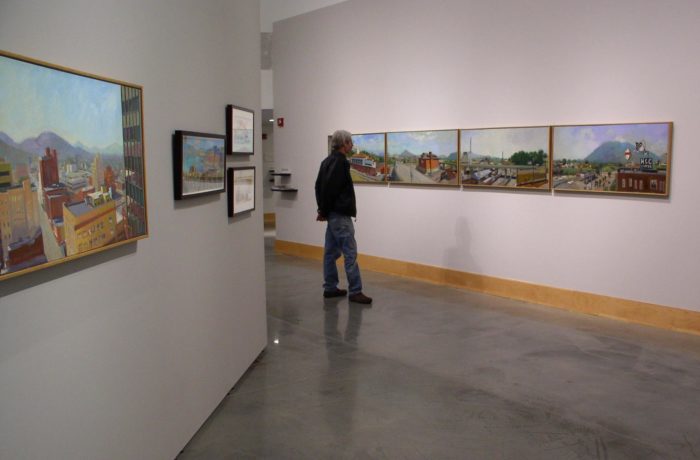
Taubman Panorama * 2010 2’x4’ (4@16’)Oil on Canvases • Installation at the E. D. Wilson Museum in 2011
LG: Increasingly, many art schools are reducing the focus on traditional studio training instead of focusing more on art theory and helping students talk about their art and promote their careers. I’ve heard from various teachers that the methods and criteria for evaluating work have changed. For some, especially younger teachers, the work is discussed less for the formal visual qualities and more about its reasons and what it’s about. Years ago, when asked what the painting was about, you could often barely get out a complete sentence before the teacher would shut you up and say what was good or bad about the picture. It was common for teachers to speak frankly or give brutal critiques back then. Increasingly, schools today place far greater importance on what the student is feeling and saying about the art in terms of theory, relevance to social concerns, etc. Students who want to make paintings that are primarily visual or beautiful are all too often discouraged as that is seen as being about making commercial products and not true fine art.––What experiences or thoughts can you share about this issue?
Bill White: The older I get the more appreciative I am of the serious fundamental studio education I got at PCA in 1963 to 1967. Drawing from the model, painting from the model & set-ups and having teachers who were serious working artists, combined to make the whole experience rich and complex. We asked questions and had questions asked of us, it was a dynamic time. It was essential that whatever we claimed about our “intentions” could be shown in the object at hand. Larry Day was an important mentor & painter whose work challenged me often, and when we would talk about his work or mine the discussion was more about the questions and not the answers. This Socratic method was a serious means to the end, which was that “I had to puzzle it out” since there were not simple easy answers. Aggressive and abusive comments were NOT at all common in school for me, and that helped shape my own teaching. Fairfield Porter wrote about painting in ways that resonate with me, that work needed “vitality over finish”, one needed to be “attentive, to the unfolding of the painting and to the source – out there”. Visual art needs to be visual. It seems important that teaching students how to see and respond to their process of picture-making is essential. We are living in an age where science and technology are dominant, and we expect that “everything can be explained”. Art cannot be explained.
It seems to me that much of what is happening today in art schools is influenced by DADA & Duchamp. Selecting something and declaring it Art. In the past artists were trained, as apprentices than in the atelier, then in Academies now in Art Schools and Universities. Talking about intention and social meaning is easier than expressing it in an object. So, I believe it is important to have ambition for the work, not the career.
LG: What has your painting practice been like since retiring? What are you working on now?
Bill White: I have worked since retirement with a renewed sense of freedom and pleasure in the simple act of painting. I have worked on larger landscapes plein air, and studio interiors from small to large.
I had bypass surgery in 2016 and during my recovery, I made a series of 12×12” paintings of all the things I use to make my coffee. These were done with a palette knife, like icing a cake! It was a sort of therapy for me, to work in a new way, feeling free to try using an unfamiliar tool. It opened a whole new avenue for me about how brushes and knives could be part of my means of painting. I made a self-portrait of my post-operative appearance, without a shirt on, with the palette knife, and it felt like I was sculpting the forms. I have made collages after some of my larger paintings to explore color shapes that are more emphatic than the original painting using Color-Aid papers. I discover something from the re-statement of the image, at this smaller scale and different material. I’ve also found that I can use photographs more as an aid to my memory after visiting a place. I use the photograph now as a prompt, not a source to be carefully copied. I made a series of paintings from a trip to several of the National Parks out west using this method working from a small photo on my phone to complete large paintings about 40 x 50”.
LG: I understand you also now run a gallery in Village Gallery in Caledonia, Virginia. In addition to showing art, you also teach classes there. What has that been like for you?
Bill White: In 2016 we decided to move from Roanoke, Virginia after 46 years to the Village of Caledonia, Virginia where our daughter’s family had relocated there 2 years before. We bought a storefront building on Main Street and opened an art gallery where we show mostly groups and now have a following across the region from Rochester to Buffalo. We support our regional artists of all sorts and it is this ecumenical and welcoming attitude that has given us an identity here.
I have a studio also on Main Street in an old 1830’s stone building with my substantial art library that I use in conjunction with teaching a small group of students in an open-studio/atelier format. We have informal critiques and discussions for small groups, talking about art and life in the studio.
LG: Where do you show your work?
Bill White: I have been fortunate to have shown with Zeuxis several times, and I am a member of the Midwest Paint Group. MPG has a history of wonderful group shows that have traveled to museums and college art galleries over the years. One of the benefits of these shows is the catalogs that accompany the shows, so more people have seen my work after the fact now. I was fortunate to have had a 50-year retrospective at Rider University in 2016, called Life in the Studio. I needed to look back over all those years to select paintings that showed what my interests were, over 50 years. I learned much about myself too.
>LG: What else might you be able to tell us about your life as an artist?
Bill White: There is a quote from Matisse that is how I see my history too. “I feel very strongly the bond between my old works and my recent ones. But I do not think the way I thought yesterday. My fundamental thoughts have not changed but have evolved and my modes of expression have followed my thoughts. I do not repudiate any of my paintings, but I would not paint one of them in the same way if I had to do it again. My destination is always the same, but I work out a different route to get there.”
We have been able to travel over the years abroad and within the states. I have painted in casein, gouache as well as oil. I feel that when I am experiencing a new place it is important to slow down and paint from these places to see better just what their landscape & light are all about. Drawing in the museums from great paintings has been something important for me, to record my sense of the work while standing there in its presence.
I have sketchbooks of studies, made from my art books in my studio, from paintings I admire and want to learn from. These small studies, often in cheap oil pastel, pencil, or gouache, are meaningful for me because I discover aspects of these works that are not revealed in a simple glance. I add notes around the studies that register some of the things I saw and learned from the simple study. I look back at these sketchbooks over time as a way of refreshing my memory about the things I saw in them at that time and then reflect on how I’m seeing the same work now.
Link to the Bill Whit Empathy and Engagement exhibition catalog, 2011, The Eleanor D. Wilson Museum at Hollins University


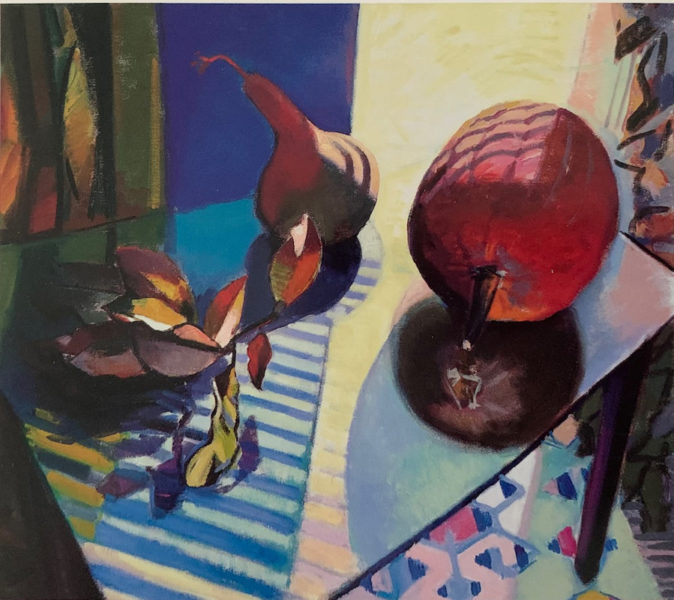
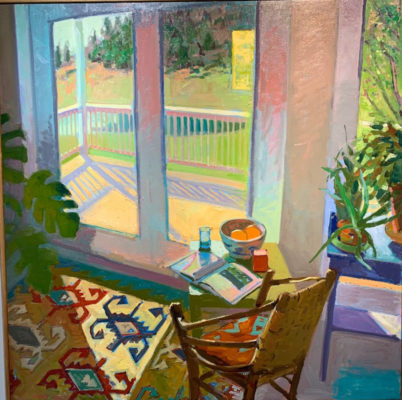
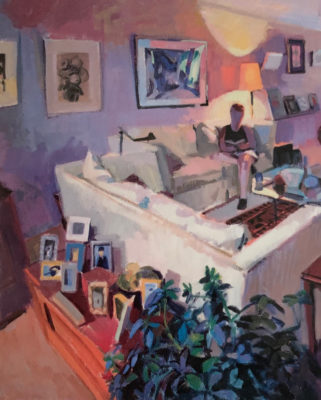

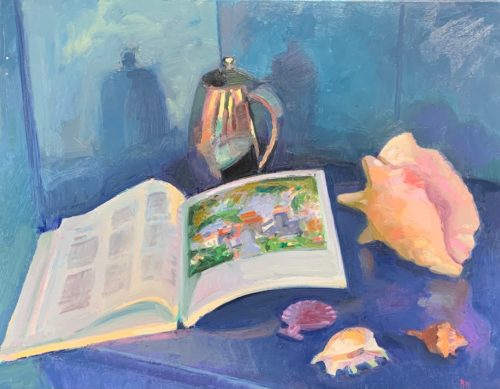
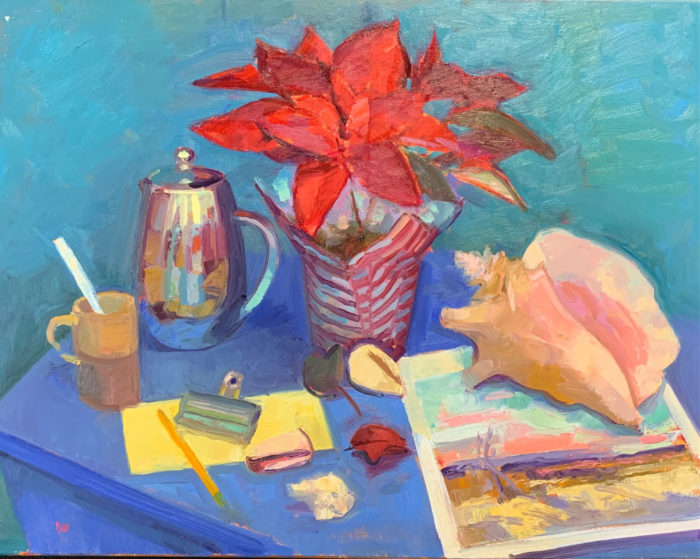
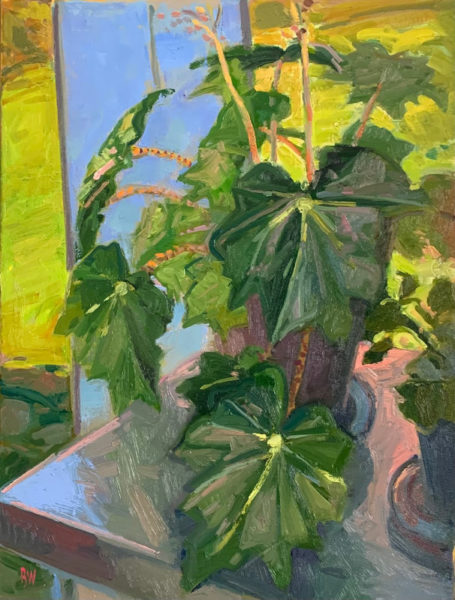

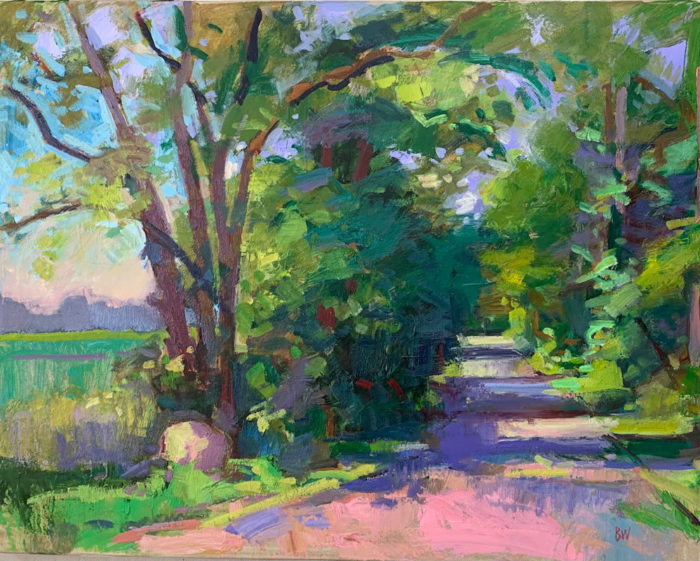
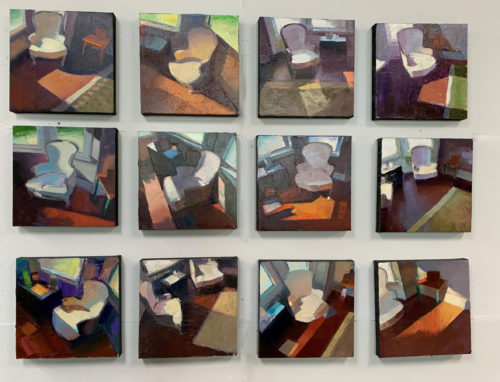

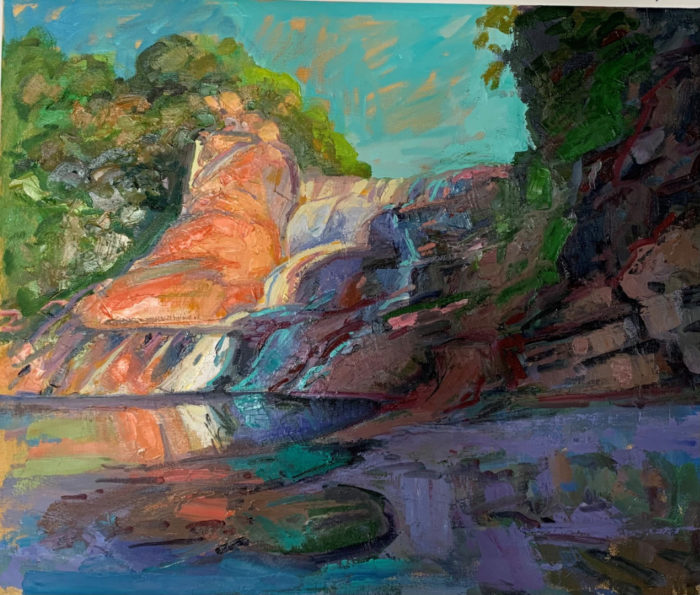

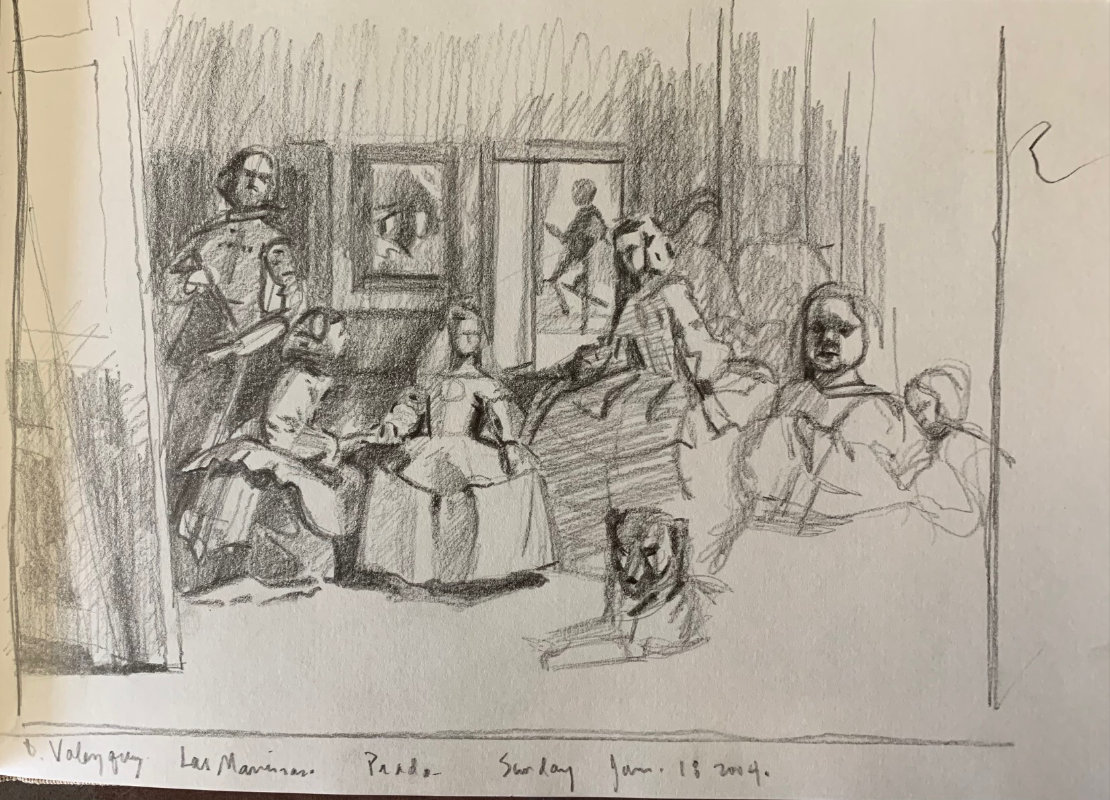
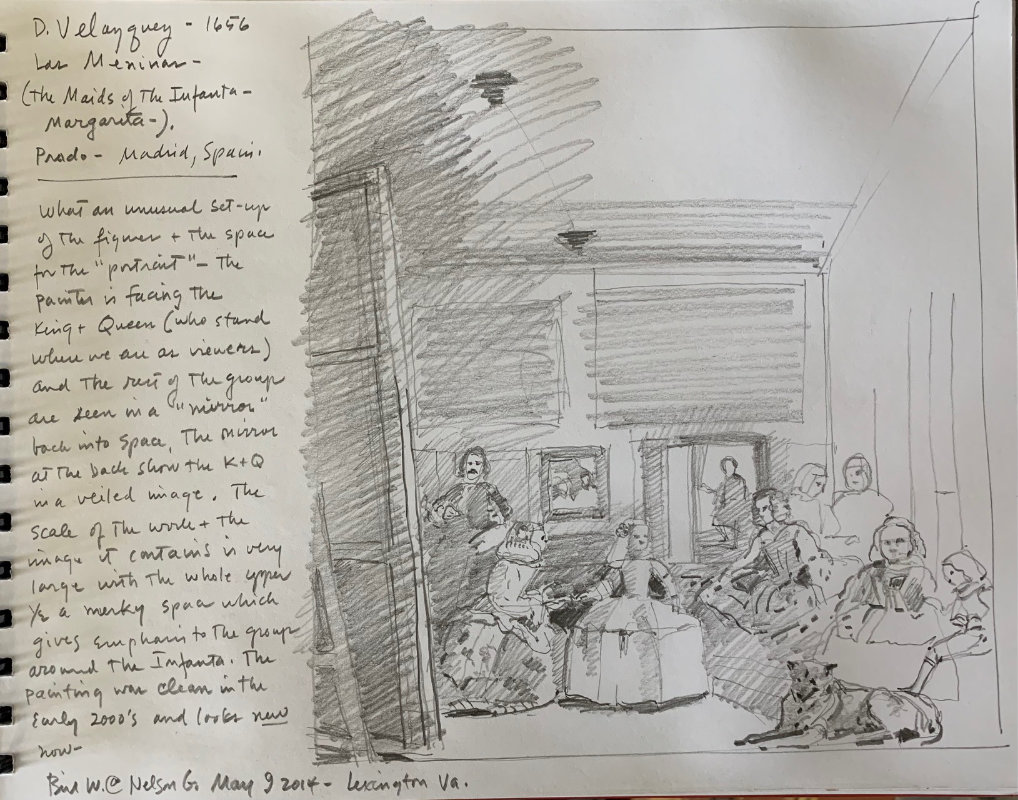
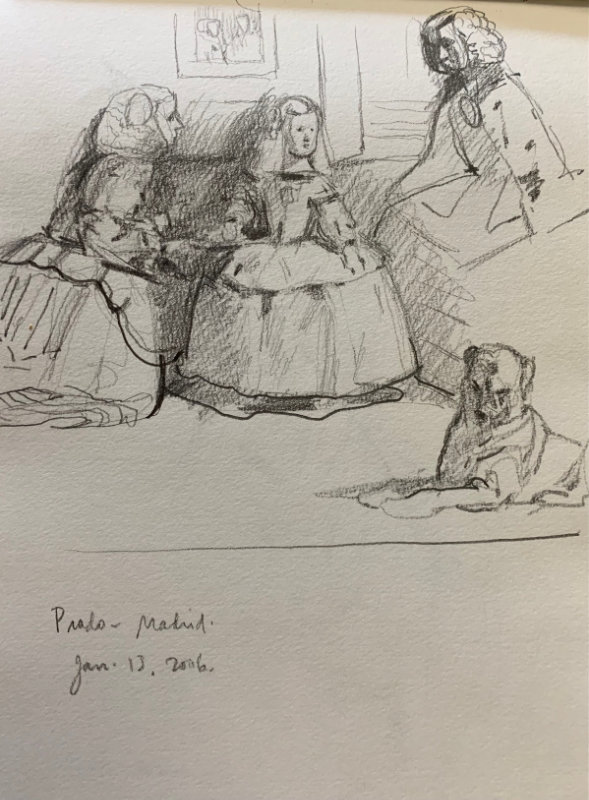
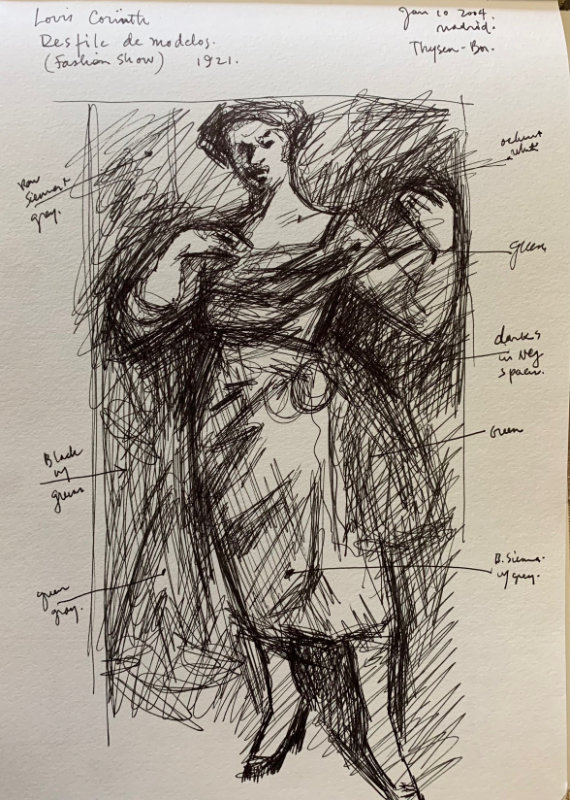
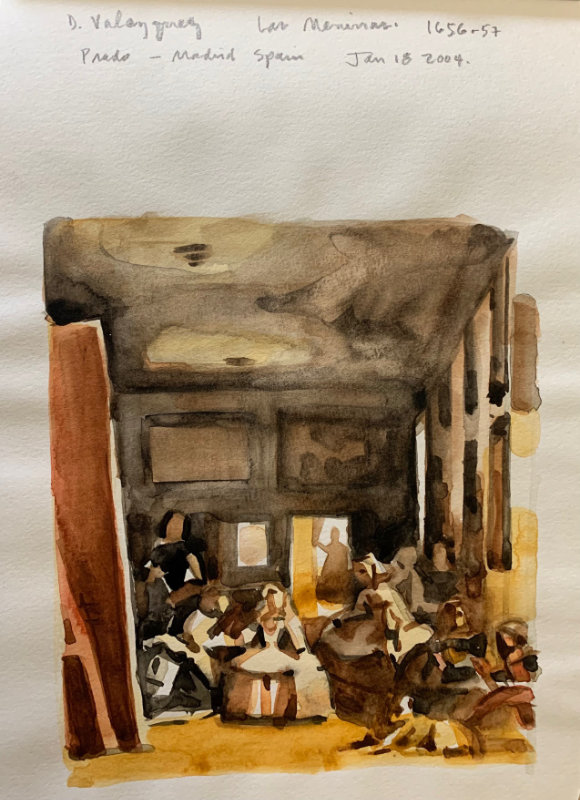
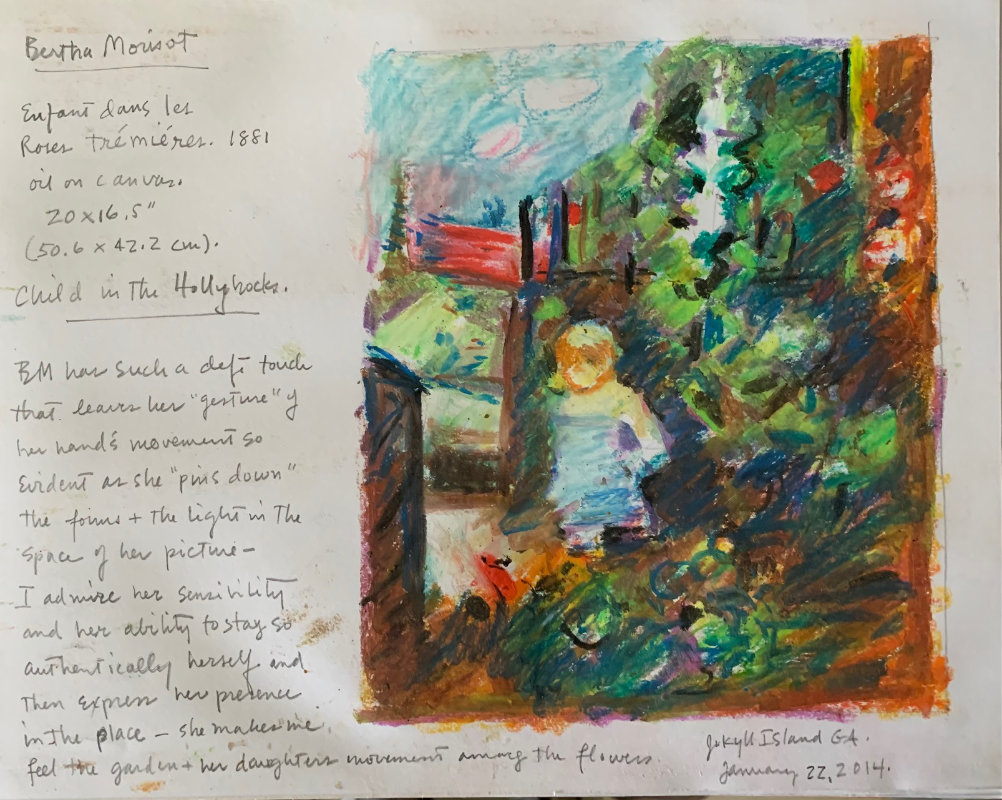
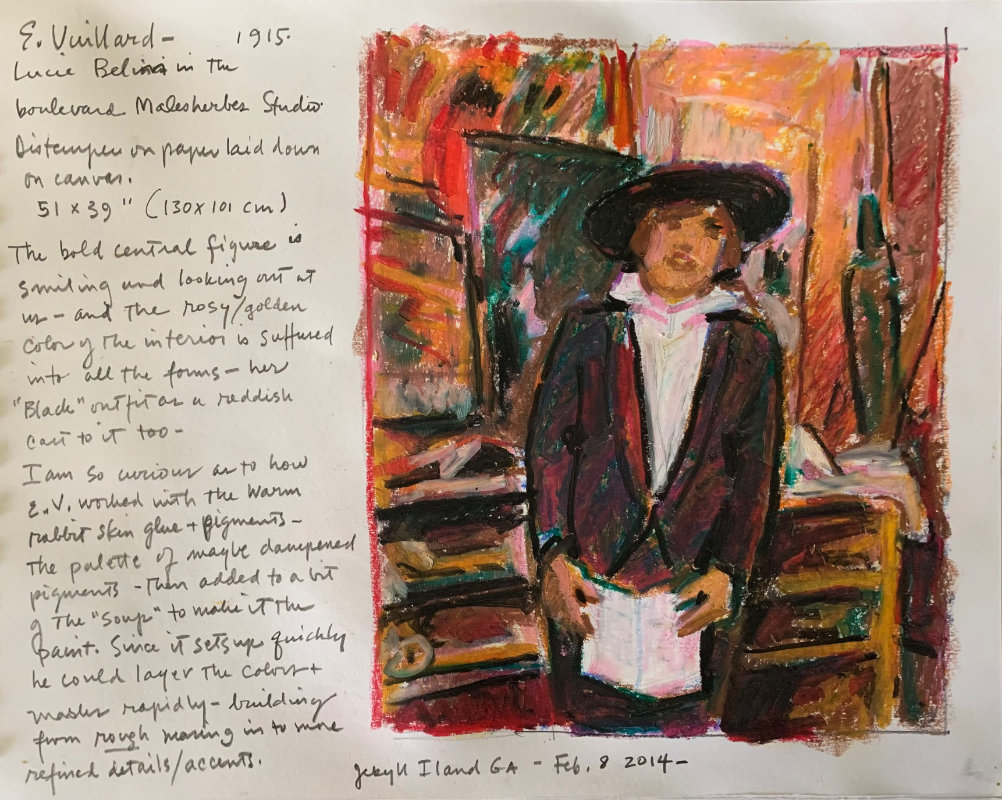

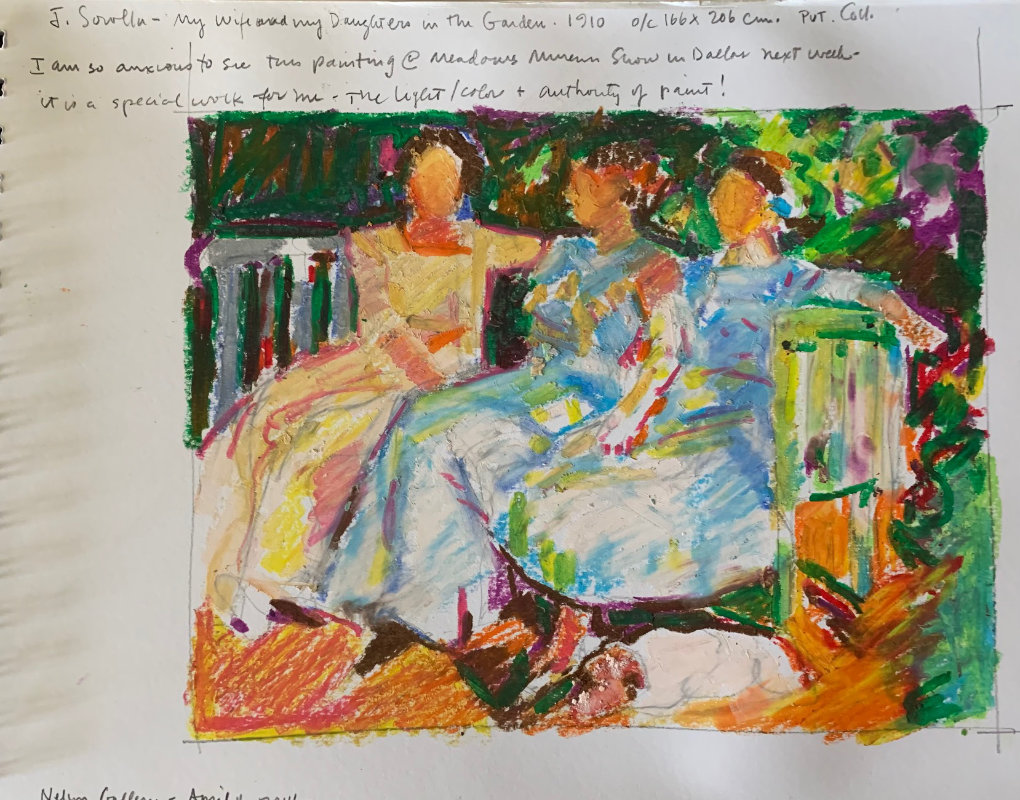
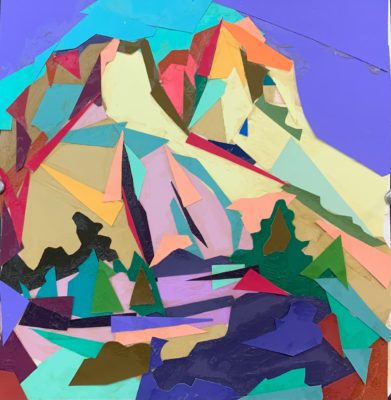
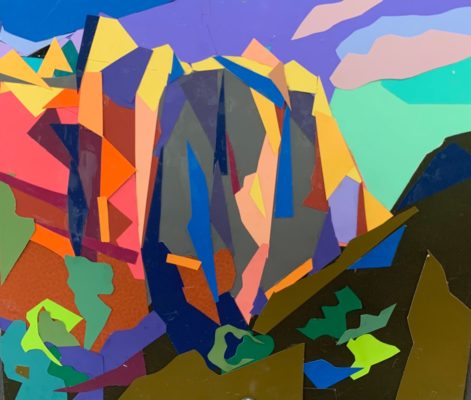
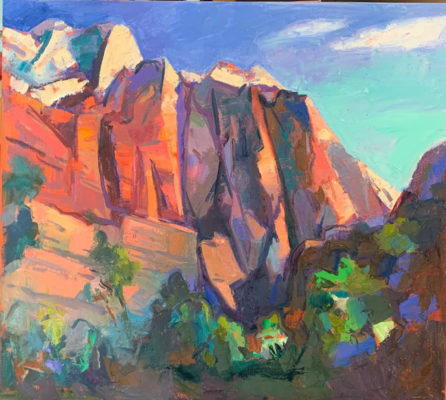
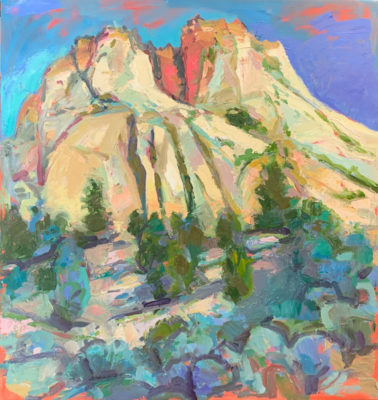
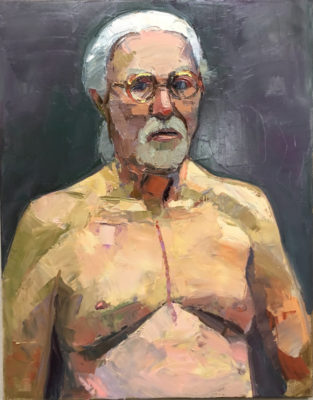
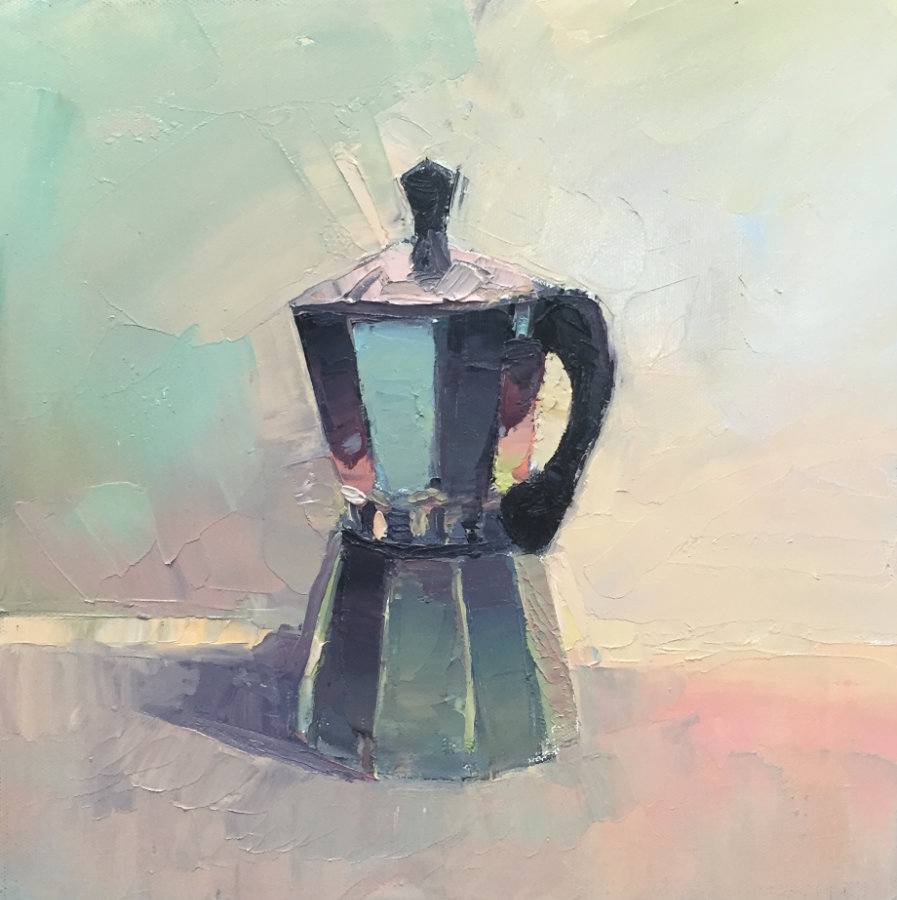
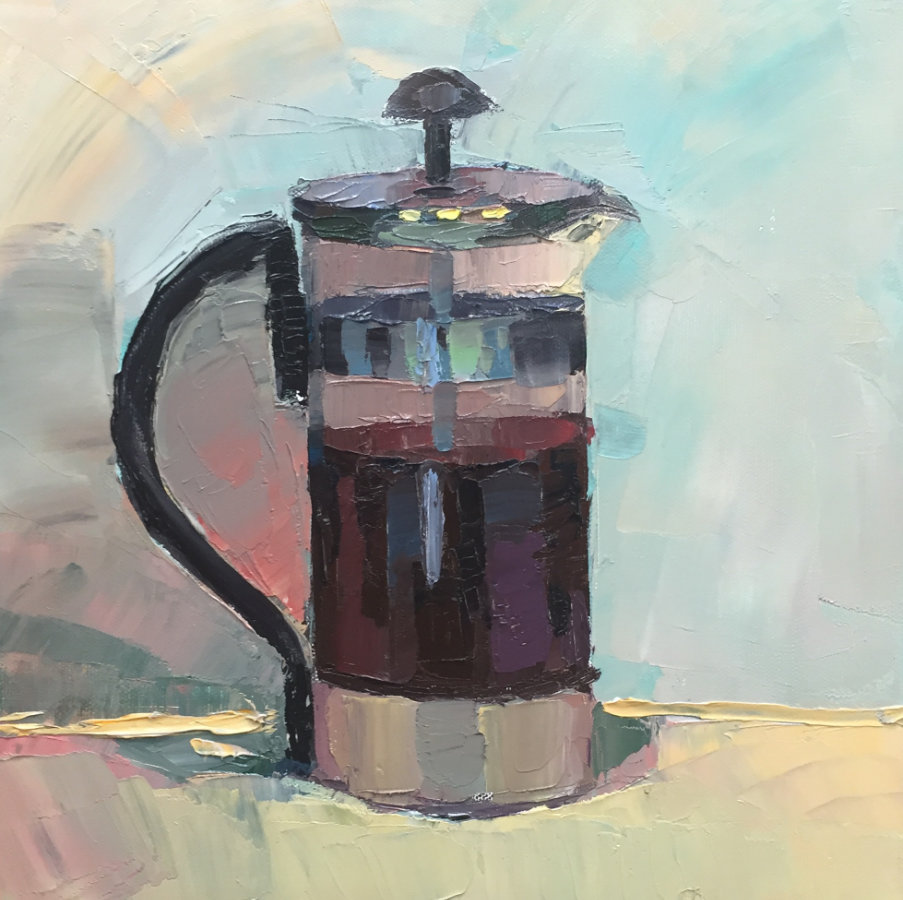
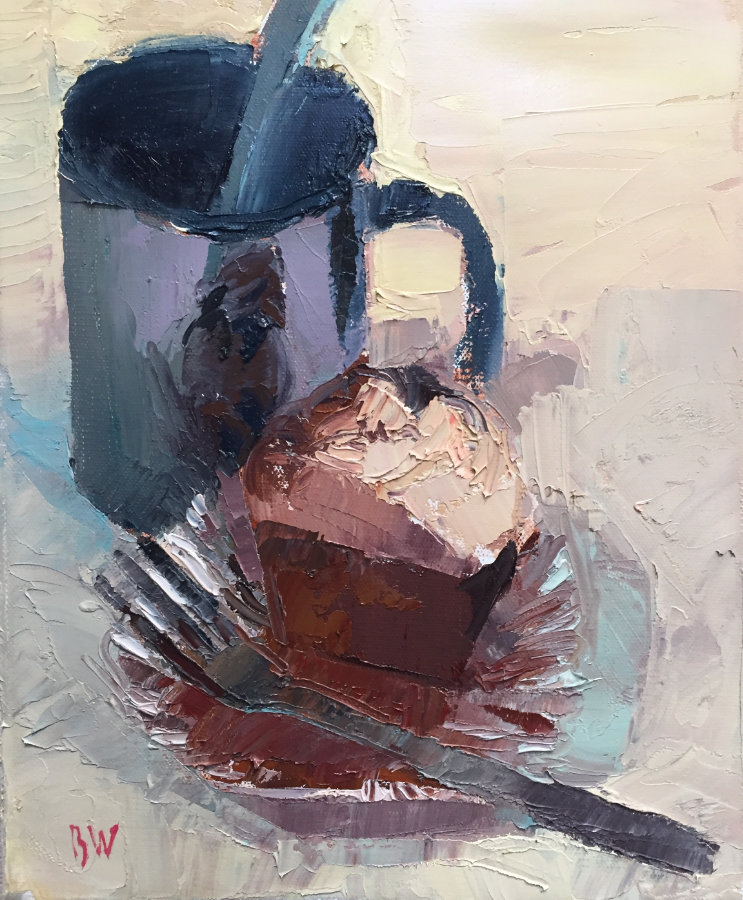
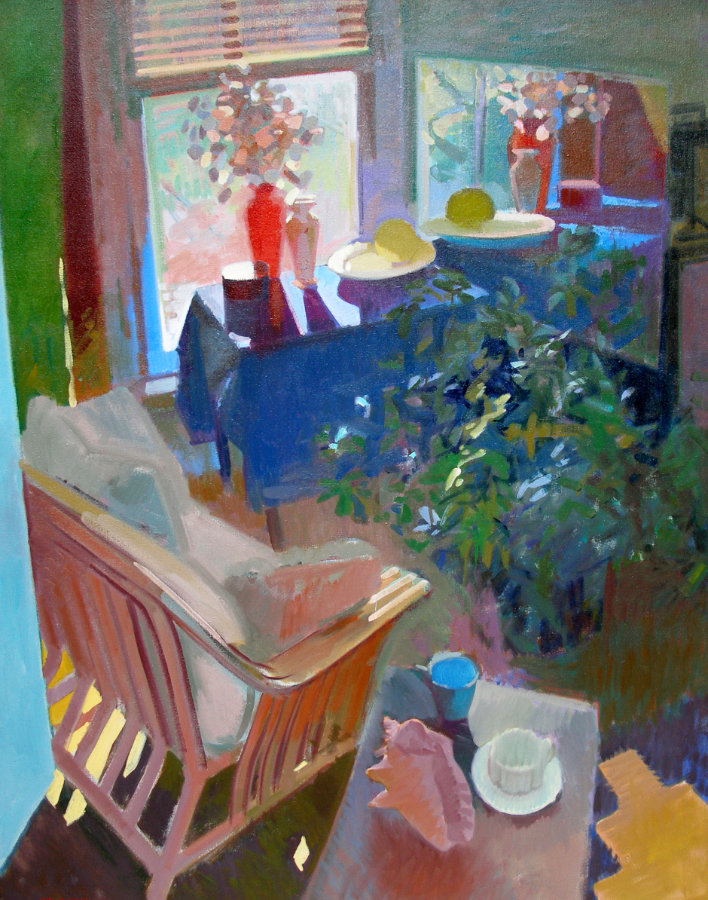
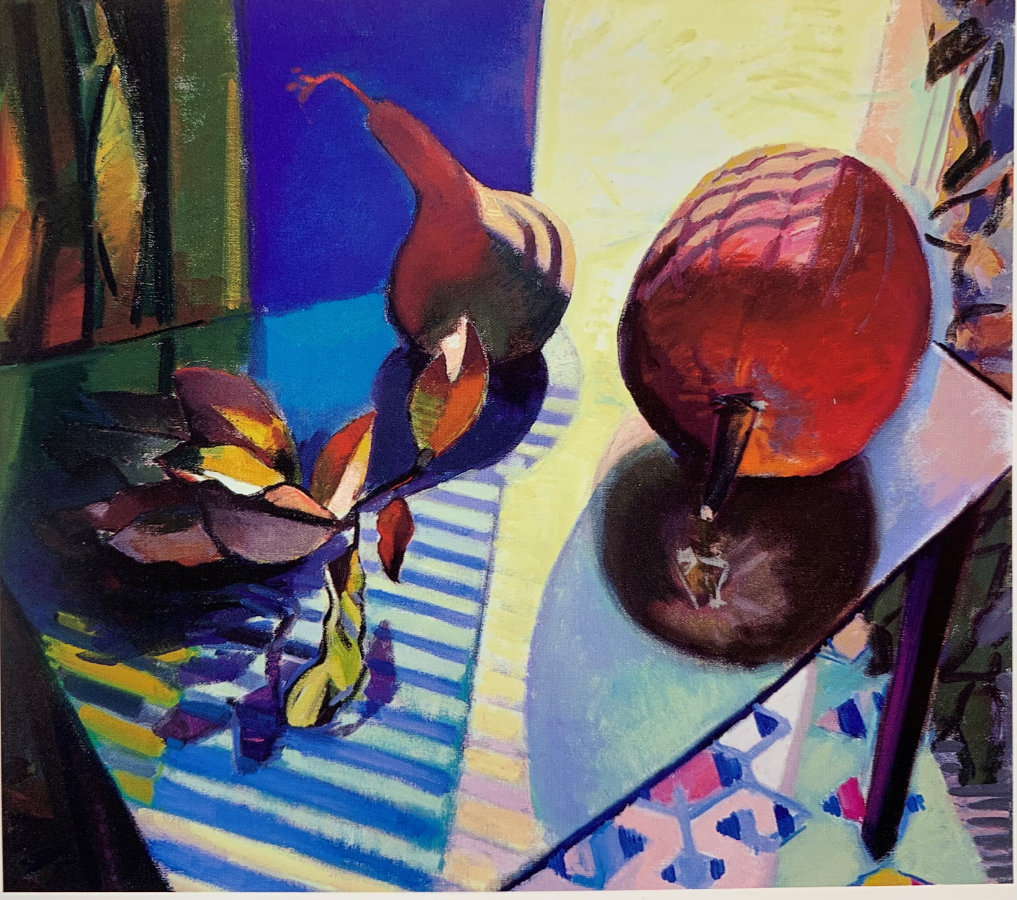
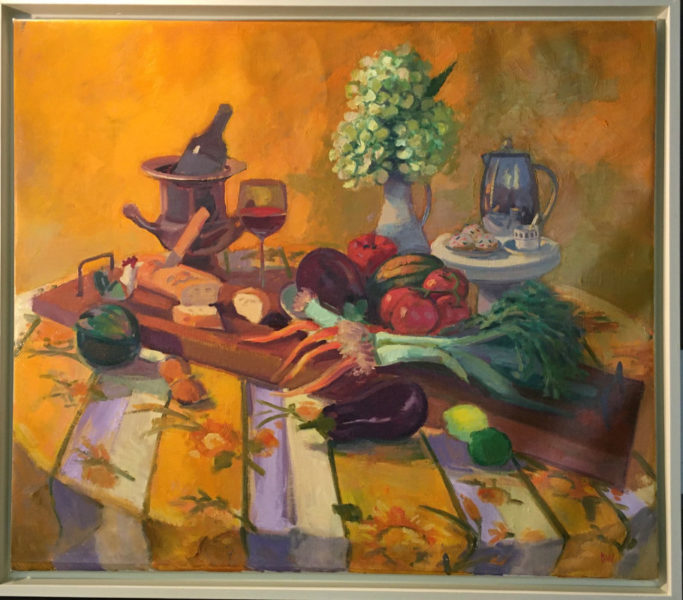




This is fabulous archive of Bill’s career and philosophy. Thank you!! I have a new favorite in addition to the coffee series – Pink Path. Love that one!!
Larry and Bill, what a wonderful interview. Very inspiring. Beautiful paintings. I particularly like how you end with the Matisse quote.
It is such a great gift to have the Whites and their gallery in our little town.
Really good interview Larry. I don’t know Bill’s work I really enjoyed looking at his painting. And what he said.
Andrew I’ve seen your work and admire your work too Maybe one day our paths will cross?
Thanks
Bill was one of my friends and professors at Hollins College (now University) back in 1984-86. I’m glad to see he moved to my state of NY and is still going strong! What stunning work by a kind and talented soul. I hope you are well!
Laura A. Swicker Barber
New York City
Thanks Laura for your comment and we’re glad to be in Caledonia now with all 4 generations together here in our little village
2 little great granddaughters too
It’s hard to believe that was 40 years ago
I hope you will have a safe and healthy new year